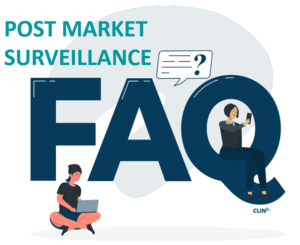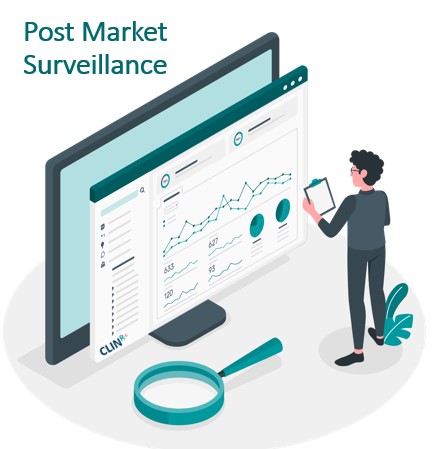Post Market Surveillance FAQ

Q: What is Post Market Surveillance (PMS)?
A: Post Market Surveillance (PMS) refers to the ongoing process of monitoring and evaluating the safety, performance, and risk-benefit profile of medical devices after they have been placed on the market. It involves collecting and analysing data from various sources to identify and address any potential issues or risks associated with the use of the device in real-world settings.
Q: What is PMS used for?
PMS aims to ensure the continued safety and effectiveness of medical devices by detecting and responding to adverse events, product malfunctions, or any other issues that may arise once the device is in use. It is an integral part of the regulatory framework governing medical devices, as it helps to identify and manage potential risks, inform product improvements, and ensure patient safety.
Q: Why do manufacturers need PMS?
By implementing PMS, manufacturers can gather valuable insights from user experiences, clinical data, feedback from healthcare professionals and patients, and other relevant sources. This data allows them to assess the device’s performance, monitor its benefits and risks, and take appropriate actions such as updating instructions for use, issuing safety alerts, or initiating product recalls if necessary.
Q: How long does PMS last for?
Q: What is the difference between QMS, PMS, and PMCF?
Q: What is 'reactive' PMS?
A: ‘Reactive’ PMS involves responding to events such as complaints, major injuries, or deaths, and is commonly referred to as ‘vigilance.’ These activities are considered ‘passive’ as they mainly collect data.
Q: What is 'proactive' PMS?
A: ‘Proactive’ PMS focuses on anticipating and preventing problems before they occur. It involves taking measures to identify and address potential issues, aiming to prevent problems rather than solely collecting data.
Q: What should be considered when establishing a Post Market Surveillance system?
A: It is crucial to develop a Post Market Surveillance system that can withstand scrutiny from Notified Bodies. This includes understanding the themes of the PMS Regulation and addressing them accordingly.
Q: What is the significance of document control and audit trail in PMS?
A: Establishing a system to track post-market monitoring and actions taken by the organization to analyse the product continuously is critical. Conducting literature searches and monitoring adverse event databases are effective methods for PMS analysis.
Q: Why is adverse event monitoring important in PMS?
A: Monitoring adverse events is vital in all countries where the medical device is distributed. This constitutes the ‘reactive’ aspect of PMS. Manufacturers and economic operators are required to monitor product issues and respond appropriately, notifying the Notified Body promptly in case of any relevant publication.
Q: How should the benefit-risk determination be updated in PMS?
A: The benefit-risk assessment should be regularly updated by examining relevant data, including scientific literature, adverse events, and technical product upgrades. It is crucial to ensure that the assessment reflects the current state of the product and its alignment with safety and performance standards.
Q: What is trend reporting in the context of PMS?
A: Trend reporting refers to the frequency of recorded incidents associated with a medical device. Manufacturers are responsible for examining these occurrences and assessing whether an increase in adverse events impacts the benefit-risk analysis of the product.
Q: What reports are required for effective PMS?
A: The EU MDR necessitates the preparation of post-market surveillance reports (PMSR) for low-risk devices and periodic safety update reports (PSUR) for higher-risk devices. These reports summarize the PMS data, including post-market information, vigilance reporting, and the device’s market status in the EU.
Q: What are the requirements for vigilance data gathering under the EU MDR?
A: Vigilance procedures, distinct from PMS, are outlined extensively in the MDR. Manufacturers are required to have a vigilance plan as part of their PMS plan, which includes data collection on serious incidents, analysis of incidents, complaint handling, trend analysis, and reporting to competent authorities.
Q: What is vigilance reporting?
A: Vigilance reporting involves notifying competent authorities about actions taken by manufacturers to reduce the risk of death or serious deterioration in health.
Q: Who is responsible for vigilance reporting?
Manufacturers or authorized representatives are responsible for distributing vigilance reports to competent authorities in the countries where the device is marketed.






